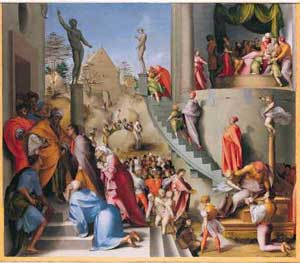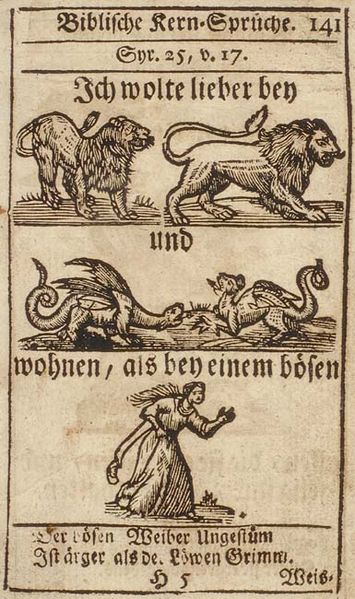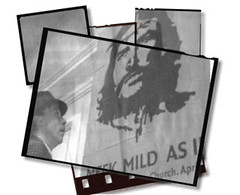Exile and the Diaspora
 A far more profound challenge for the exile and return motif is raised when the evidence is read in such a way as to call into question any use for the exile. More specifically does the exilic element in Second Temple Judaism(s) loose all its ability to resonate, if it is discovered that the Jews of the diaspora were not languishing in the constant reminder of national sin and thus longing for an idyllic restoration?
A far more profound challenge for the exile and return motif is raised when the evidence is read in such a way as to call into question any use for the exile. More specifically does the exilic element in Second Temple Judaism(s) loose all its ability to resonate, if it is discovered that the Jews of the diaspora were not languishing in the constant reminder of national sin and thus longing for an idyllic restoration?
This new perspective of the diaspora argues that even though the Greek term for ‘diaspora’ may mean ‘scattering’, and while it has been argued that in ancient Jewish usage the term generally had connotations of ‘exile’, which was brought about by divine judgment,[1] we now know that some, perhaps most, Jews in the ancient ‘diaspora’ did not think of their location in that way, nor did all necessarily regard Palestine as their ‘homeland’ in any meaningful sense.[2] Many Jews were integrated into their respective cities of residence, and this did not mean the abandonment of active attention to Jewish distinctiveness. It was as Jews that they were involved in, and part of, the life of the cities in which they lived.[3]
The issue is often too readily conceived of in terms of mutually exclusive alternatives: either the Jews regarded their identity as exilic and the achievement of their destiny was wholly dependent upon re-entry into the Land; or they clung to their heritage abroad, shifting attention to local and regional loyalties, and cultivating a permanent attachment to the diaspora.[4] Those alternatives, of course, have continuing contemporary resonance, but the Jews of the Second Temple period did not confront such a stark choice.[5] The diaspora was not something to be overcome.[6] It was not as if pinning away for the restoration of their homeland was the single ideal which Jews embraced to remain faithful.[7] As a matter of fact, the Jews living around the Mediterranean were unapologetic and not embarrassed by their situation. They did not describe themselves as part of any diaspora. They did not suggest that they were cut off from the center, leading a separate, fragmented, or unfulfilled existence. People from communities and nations everywhere settled outside their places of origin in the fluid and mobile Hellenistic world without abandoning their identities as Athenians, Macedonians, Phoenicians, Antiochenes, or Egyptians. The Jews could eschew justification, rationalization, or tortured explanation for their choice of residence, for they felt no need to construct a theory of diaspora.[8] The Jewish communities abroad still paid respect to the holy land while standing in full harmony with and allegiance to the Gentile governments. Diaspora Jews did not bemoan their fate or pine away for the homeland. Nor, by contrast, did they ignore the homeland and become people of the book, which became a surrogate for the temple.[9] Palestine mattered, and it mattered in the territorial sense, but it was not a required residence. Just as the Jews made pilgrimages to the Temple in Jerusalem, they likewise announced a devotion to the symbolic heart of Judaism and had singular pride in the accomplishment of the diaspora. Jewish Hellenistic writers were not driven to apology. Nor did they feel obliged to reconcile the contradiction, for as they saw it, there was none.[10]
The advancement of this corrective concerning the ability of Jews in the Second Temple period to live faithfully in foreign lands is needed and welcomed. And while we agree that it is simplistic to view the various Jewish rehearsals of the biblical history of exile as automatically proof for exilic thought in the Hellenistic diaspora, it seems that Gruen is alternatively too quick to gloss over any mention of exile during the period as having any present day ramifications. When we view the use of exile as shorthand for the multifarious ideas that restoration is still future, we are able to hold together the present day resonances of exile, without the doleful picture in which Gruen seeks to eradicate.[11] It is true that during this time the Jews did very little about their desire to be free from Roman rule and create a Jewish state in Palestine. But as James C. Scott has shown us it is dangerous to interpret passivity as equal to the idea that Jews had no hopes for a Jewish state at all.[12]
The crux of the issue resides in the questions that Gruen so carefully raises: does exilic theology have to be a theology of despair, a theology of national corporate guilt, where the righteous individual bemoans the fact that the nation is not what it ought to be, that the Temple is not functioning as it ought, or that Israel is not under self-rule?[13] Could it be that a man like Yeshua Ben Sira, while possibly being content with the religious autonomy the Jews enjoyed at the time, nevertheless dreamed that the Jewish nation would regain the political grandeur it had once enjoyed in the past (whether this be described in terms of political nationalism, or as discussed earlier in terms of the eschatological end of time)?[14] In fact exile could be interpreted metaphorically as Neusner postulates, in order that an ‘Israel’ might never take its very existence as a permanent condition; rather, the paradigm of exile and return might remind the Jews that ‘the life of an Israel was never to be taken for granted but always to be received as a gift.’[15] In this manner all Judaism(s) became a reworking of exile and return, alienation reconciliation, a group troubled by the resentment of that uncertain past and of that future subject to stipulation.[16]
Whatever the term exile meant to the various Judaism(s), it was obviously still a powerful symbolic term, with a potent array of meanings. It was the type of concept that was malleable enough for the variegated Judaic groups to use in diverse ways without talking about completely different concepts. It does not follow that all Jews were waiting for restoration in a literal sense (land), and it does not follow however that all Jews mourned their national sin and eagerly awaited God’s vindication (although no doubt some did). And while the remnant theology offered a way for the individual to be holy despite the larger sin of the nation, it did not diffuse the use of the exilic narrative as a powerful narrative.
Our task in this section was to offer enough plausibility to warrant our looking at Paul through the lenses of exile and return, through the lenses of a powerful biblical and extra-biblical motif in which the ‘second exodus’ was prevalent.[17] We have seen that neither the existence of a remnant theology nor the perspective of an assimilated faithful necessarily negate the powerful symbolic images of exile and return. We have also acknowledged that not all the Jews of this period believed that they were still in exile, and among those Jews who did, there was even more diversity as to how they thought the restoration would be consummated.[18] Whatever the Jew on the ground actually believed, we may never know for certain, but there are enough texts which have come down to us, that speak of a continued state of exile after the (re)building of the Second Temple, and its subsequent destruction, so as to speak of a plausible shared cultural background of exilic thought, albeit malleable enough to speak in many different ways.[19]
[1] See, Unnik, Das Selbstverständnis Der Jüdischen Diaspora in Der Hellenistisch-Römischen Zeit, 89-147.
[2] Barclay, "Diaspora Judaism," 48. It is important not to understand the encounter with Judaism and Hellenism as being one of only enmity. Furthermore, it follows that hellenization is not a single entity, and so if you are hellenized in one aspect it does not follow that you are hellenized in every respect. Perhaps a more nuanced view of diaspora Judaism is to recognizes that the object was not to ape Greek culture so much as to re-express Judaism within it, sometimes even with a significant polemical edge against non Jews. So Barclay, "Diaspora Judaism," 49, 51, 53. See also Thomas Kraabel, "Unity and Diversity among Diaspora Synagogues," in The Synagogue in Late Antiquity, ed. Lee I. Levine (Philadelphia: American Schools of Oriental Research, 1987), 57-58, who argues that over the centuries many Jews left the homeland voluntarily, just as did other people of the Mediterranean, to seek their fortunes in the centers of power of the Hellenistic and Roman world. These individuals did not understand themselves to be in exile, but rather welcomed and desired immigration as part of a new situation that was also under the control of Providence. The diaspora was not exile; but in some senses it too became a holy land.
[3] Paul R. Trebilco, Jewish Communities in Asia Minor (Cambridge: Cambridge University Press, 1991), 187.
[4] Many who view the diaspora in this way view the Jewish people as no longer people of the ‘Land’ but as people of the ‘book’.
[5] Gruen, Diaspora, 235.
[6] Gruen, Diaspora, 233.
[7] Gruen, Diaspora, 234. cf. Deuteronomy 30.2-5; 1 Kings, 8.33-34, 8.46-51; 2 Chronicles 6.24-25, 36-39; Jeremiah, 29.10-14.
[8] Gruen, Diaspora, 243; Barclay, Jews in the Mediterranean Diaspora: From Alexander to Trajan (323 Bce - 117 Ce), 418-24, also argues that the attachment of the motherland could coexist with fidelity to the regions abroad, although he regards the degree of attachment as dependent upon the circumstances of the community.
[9] A popular alternative to an exilic understanding of Second Temple Judaism(s) is to posit that the Jews where in no way interested in a territorial sanctuary or national legitimation because through the Babylonian diaspora they had become ‘the people of the book.’ In this view their homeland resides in the text—not just the canonical scriptures but in a wide array of Jewish writings that help to define the nation and give voice to the sense of identity. Thus for these Jews the diaspora is no burden, but rather a virtue in the spread of the word. This justifies a primary attachment to the land of one’s residence, rather than the home of the fathers. See S.D. Ezrahi, "Our Homeland, the Text...Our Text, the Homeland," Michigan Quarterly Review 31 (1992): 463-97; G Steiner, "Our Homeland the Text," Salmagundi 66 (1985): 4-25.
[10] Gruen, Diaspora, 252.
[11] Gruen, Diaspora, 239.
[12] Doron Mendels, The Rise and Fall of Jewish Nationalism: Jewish and Christian Ethnicity in Ancient Palestine (Grand Rapids: Eerdmans, 1996), 7.
[13] See, for example, the puzzling criticism of Seifrid, Christ, Our Righteousness, 22-25, who bemusingly argues that an exilic interpretation of the Second Temple texts is just a ‘mere variation’ of an introspective psychologizing of Paul. Only the burden of personal guilt (sin) carried around by Paul, is replaced by the onus of national guilt (sin). Seifrid mistakenly views guilt with sin, the two may go hand in hand, but not necessarily. Why it follows that Jews of the Second Temple period who were expecting the return from exile, necessarily had to be guilt ridden seems to import the vary framework of introspective guilt on to the whole of the nation, a concept that Stendahl has vigorously tried to shed. See Krister Stendahl, "Paul and the Introspective Conscience of the West," in Paul among Jews and Gentiles: And Other Essays (Philadelphia: Fortress Press, 1976), 78-96.
[14] Mendels, Jewish Nationalism, 6. Obviously there were Jews who accepted Roman rule and who were quite content with it. They may have actively supported the Romans because they believed either that God had justly deprived them of their state or that the Jews no longer needed an independent state.
[15] Neusner, Judaism When Christianity Began, 58.
[16] Neusner, Judaism When Christianity Began, 59.
[17] Of course there are those who deny or downplay the exile/return motif by offering an alternative narrative altogether. Most notably in the essay ‘See How They Go with Their Face to the Sun’ John Howard Yoder, For the Nations: Essays Evangelical and Public (Grand Rapids: Eerdmans, 1997), 51-78., sets out the history of diaspora Judaism as a means for God to accomplish the world mission that was impossible when Israel was settled in Judea. Thus instead of the theology of exile/return, the normative theology according to Yoder is that of the diaspora found in Jeremiah 19.4-7. The new pattern for the Jews was to live well among a foreign people, because in their ‘welfare you will find your welfare’. See also Daniel Boyarin, A Radical Jew: Paul and the Politics of Identity (Berkeley: University of California Press, 1997), 242-60; John Howard Yoder, Michael G. Cartwright, and Peter Ochs, The Jewish-Christian Schism Revisited (Radical Traditions; Grand Rapids: Eerdmans, 2003). For a recent biblical theology of exile that incorporates many of these ideas see Daniel L. Smith-Christopher, A Biblical Theology of Exile (Overtures to Biblical Theology, Minneapolis: Fortress Press, 2002).
[18] This is to say that the invention of single coherent grand narrative, like Wright suggests, which controls the range of Jewish expectations during this period is probability untenable. See the criticisms ofJames D. G. Dunn, Jesus Remembered (Grand Rapids: Eerdmans, 2003), 473-77.
[19] Certainly enough evidence exists to move forward with a reading attuned to the motif of exile and return, even if such motifs were never part of the larger shared cultural background. See also the discussion in, J. Ross Wagner, Heralds of the Good News: Isaiah and Paul in Concert in the Letter to the Romans (Leiden: Brill, 2003), 29-33.


















